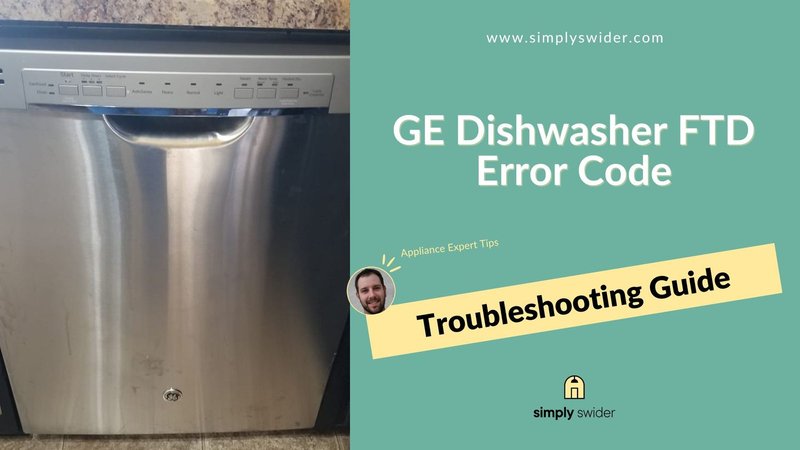
Prevention is always better than cure, and just like maintaining a car to avoid breakdowns, taking small regular steps can keep your dishwasher from showing this dreaded code. After all, having clean dishes ready is something we all look forward to. So, let’s dive into how you can prevent this error and keep your kitchen routine running like clockwork.
Why Error Code OE Happens
Error Code OE typically indicates that your dishwasher is having difficulty draining. Think of it like a clogged sink; until the blockage is cleared, the water can’t exit properly. The most common culprit is a blocked drain hose or filter. Over time, food particles, soap residues, and other debris can accumulate, much like hair can clog a shower drain. If these build up too much, they create a barrier, preventing the water from flowing as it should.
Another reason could be a faulty or malfunctioning drain pump. Imagine if the pump is like the heart, pushing water out; if it’s not working well, the water stays put. Sometimes, it could even be an electrical issue where the pump isn’t receiving the power it needs, similar to when you’re trying to use an appliance in a powerless outlet.
Moreover, improper installation can also be a factor. If the drain hose isn’t positioned correctly, it might cause water flow issues. It’s a bit like having a kink in your garden hose—no matter how much you turn the faucet on, the water barely trickles out. By understanding these causes, you can get a clearer picture of how to avoid encountering them in the future.
Regular Maintenance Tips
To prevent error code OE from surfacing, regular maintenance is key. Just like you wouldn’t drive a car for thousands of miles without a service, don’t let your dishwasher go without a little TLC. Start by checking your dishwasher’s filter every month. It’s usually located at the bottom and can be removed easily. Rinse it under running water to wash away food bits and soap scum. By ensuring it’s clean, you’ll help maintain a smooth water flow.
Another tip is to inspect the drain hose regularly. Make sure there are no kinks or bends—straighten them out if you find any. Much like straightening a bent straw, this allows the water to flow unimpeded. It’s also a good idea to occasionally disconnect the hose and rinse it out with water to remove any hidden debris inside.
Finally, keep an eye on your dishwasher’s cycle. If you notice it’s taking longer than usual to drain or there’s water left inside after a cycle, this could be a sign of impending issues. Addressing these signs early can prevent a full-blown error code situation, and keep your dishwasher in top shape.
Simple Use-Case Scenarios
You might be wondering how these issues manifest in everyday use. Let’s say you’ve just loaded a big meal’s worth of dishes into the dishwasher. Everything seems fine until you start to notice that the machine is louder than usual. This could be a hint of a struggling drain pump or a buildup in the filter.
In another scenario, perhaps you’re rushing through chores, and you notice a bit of water pooling at the bottom of the dishwasher after the cycle ends. This may not seem like a big deal at first, but it’s a warning sign that water isn’t draining as it should and needs your attention.
For anyone who’s installed a new dishwasher, double-check the installation guide. Ensuring that the drain hose is correctly placed can prevent potential water flow problems. It’s not unlike setting up a new home entertainment system; if all the cables aren’t correctly connected, you won’t get the desired picture quality.
Here’s the deal: preventing Error Code OE requires just a bit of regular care and attention to your dishwasher. By conducting routine maintenance and keeping an eye out for early signs of draining issues, you can save yourself the headache of dealing with a malfunctioning machine. Remember, just like in any relationship, a little attention goes a long way.
Consider setting a reminder once a month to check your dishwasher’s filter and hose. A few minutes of upkeep can spare you from a future of error codes and dirty dishes. So next time you run your dishwasher, know that these simple steps are keeping it running smoothly, ensuring clean dishes and fewer disruptions to your day.